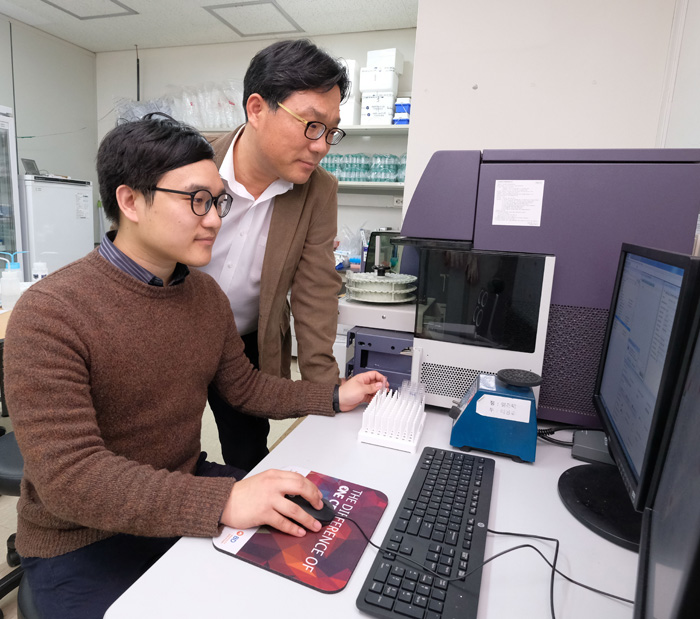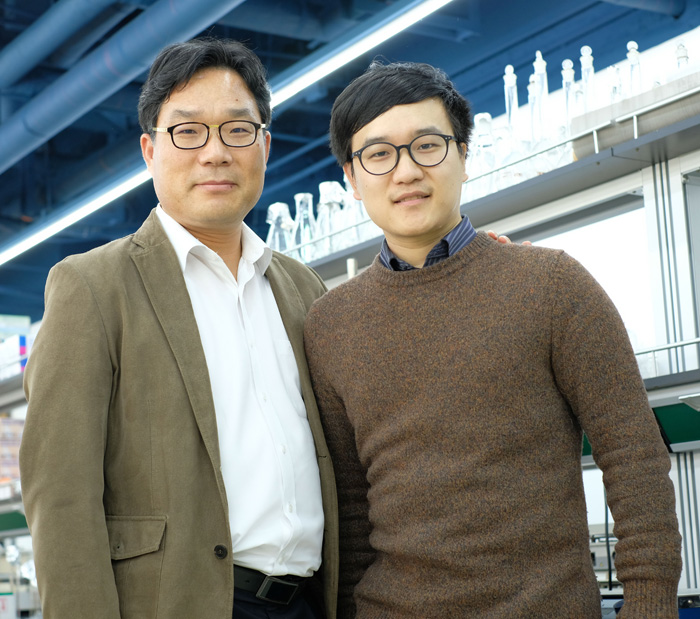Research Stories
Development of a Degradation-Regulatable Architechtured Implantable Macroporous Scaffold: Dr-AIMS
The drawbacks of i.v. injection such as low targeting efficacy and varied side effects, could be resolved. Further, it can be developed as an on-demand drug delivery system based on the analysis of tumor tissues.
SKKU Advanced Institute of Nano Technology
Prof.
LIM, YONGTAIK
Researcher Ren Long
Professor Yong Taik LIM`s group from SKKU Advanced Institute of Nanotechnology(SAINT) of Sungkyunkwan University has developed a degradation-regulatable architechtured implantable macroporous scaffold (Dr-AIMS) for spatiotemporal controlling immunosuppressive factors in tumor microenvironment, resulting in an enhanced efficiency for combination cancer immunotherapy.
The Dr-AIMS was fabricated based on hyaluronic acid, the intrinsically existing biopolymer in human, with the ability to regulate the degradation kinetics for varied applications.
With scaffold implantation after surgery, the immunosuppressive cells (MDSC: Myeloid-derived suppressor cells; TAM: Tumor-associated macrophages) related with tumor recurrence and metastasis can be controlled and the ability of DCs and T cells can be revigorated with reduced side effects of chemodrugs and immune checkpoint antibodies.
By this approach, the drawbacks of i.v. injection, including low targeting efficacy and varied side effects, could be addressed. Further, it can be developed as an on-demand drug delivery system based on the analysis of tumor tissues.
Published article:
L. Ren, and Y. T. Lim, ‘Degradation-regulatable Architectured Implantable Macroporous Scaffold for the Spatiotemporal Modulation of Immunosuppressive Microenvironment and Enhanced Combination Cancer Immunotherapy’, Advanced Functional Materials, 201804490 (2018) .


